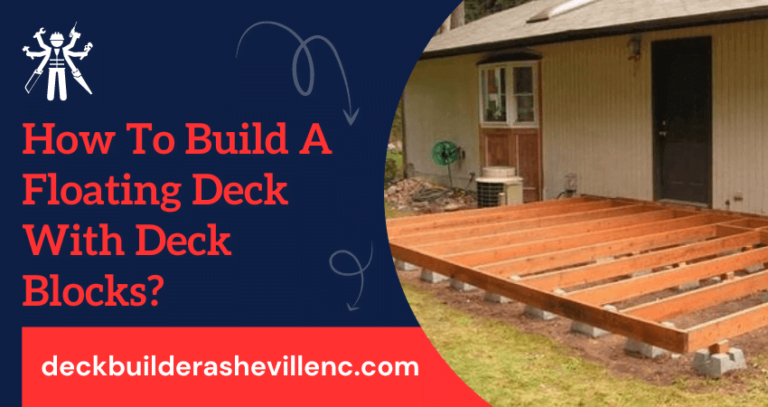How To Seal Space Between Deck Boards?
Are you considering adding a new deck to your home, or perhaps making repairs to existing wood decks? If so, it’s important to understand the various steps involved in properly sealing the space between deck boards. Doing this not only helps make your outdoor living area look great – it also helps ensure that moisture doesn’t seep into gaps and cause problems with rotting or mold growth.
In this blog post, we’ll walk you through everything you need to know about how to seal space between deck boards and keep your decks looking good for years!
Steps To Seal Space Between Deck Boards
1) Clean the area
The first step in sealing the space between deck boards is to thoroughly clean the area. Use a pressure washer to remove dirt and debris, then use a scrub brush or putty knife to scrape off any remaining gunk. Once your area is spotless, you can apply a sealer.
2) Choose the right sealer
There are a variety of sealers available on the market, so it’s important to choose one that is appropriate for your deck. If you have pressure-treated wood, look for a sealer specifically designed for this material. For composite decks, opt for a product specifically formulated for that type of decking material.
3) Apply the sealer
Once you’ve chosen the right sealer, it’s time to apply it. Start by brushing the product onto the boards in long strokes and then use an applicator or roller to spread out an even layer. Make sure to get into all of those nooks and crannies between boards! Let your newly sealed space dry completely before using your deck again – usually, this takes around 24 hours.
It’s important to remember that sealing the space between deck boards is necessary if you want your outdoor living area to look great and last for years! But with a little bit of effort, it can be easily done in a relatively short amount of time – giving you more time to enjoy your newly updated deck!
By following these simple steps, you can help protect your deck from damage and keep it looking great for years to come. When sealed properly, your deck will be ready for all sorts of fun activities, whether it’s hosting an outdoor party or simply enjoying good conversation with family and friends. So grab your sealer and get started on making sure your deck is up to par!
Note: Hire Top Rated Deck Builder in Asheville
Why is important to seal space between deck boards?
Sealing the space between deck boards is an important part of maintaining a safe and attractive outdoor space. Unsealed gaps between deck boards can allow water to penetrate, which can lead to wood rot, warping, sagging and other issues.
Additionally, unsealed spaces create an ideal environment for weeds, pests, and other unwanted visitors to take root in your decking material. By sealing the gaps between the boards you are protecting your investment from these elements, as well as helping to extend the life of your deck. Sealing also helps keep dirt, dust, leaves and other debris from accumulating in those areas as well.
Finally sealing will help prevent splinters or sharp edges from forming on exposed boards which can be dangerous when walking barefoot. Sealing the space between deck boards will ensure your outdoor living area remains safe.
Tips To Seal Space Between Deck Boards
1. Use a caulk sealant
Caulk sealant is a flexible material that can be used to fill any gaps between the deck boards. It’s important to choose one specifically designed for outdoor use, as indoor caulks may not withstand the elements. You’ll want to make sure there is no debris or dirt in the gap before applying it, as this will reduce its effectiveness and lifespan.
2. Install self-adhesive flashing tape
Flashing tape is an excellent way of waterproofing your deck boards and sealing out any moisture from below the surface. The tape is usually made of rubberized asphalt and has an adhesive backing that makes installation easy. All you have to do is measure the gap between each board and cut the tape to size. Once in place, it will effectively seal out moisture and help to protect your boards from water damage.
3. Use foam backer rod
A foam backer rod is a flexible foam material that can be used to fill large gaps between deck boards. Its flexibility makes it ideal for filling any irregularities between the boards and helps to prevent cracks or splits occurring over time due to weathering or expansion/contraction. All you need to do is insert the rod into the gap and then use a caulking gun or putty knife to push it into shape before sealing it with caulk or flashing tape.
4. Install pressure-treated lumber shims
Pressure-treated lumber shims are an excellent way of filling wide gaps between deck boards. Generally, these shims will be thin strips of pressure-treated wood that are inserted into the gap and then secured with screws or nails. This not only seals out moisture but also helps to keep your board alignment in check—helping to prevent any sagging or warping over time.
5. Use a composite filler
Composite fillers are great for sealing small cracks or gaps between boards and can provide additional structural support as well. These filters come in various shapes and sizes, so you should have no problem finding one that fits perfectly in your space. Once placed, they help to bridge any inconsistencies in the surface area and create a watertight seal that keeps moisture out of your deck boards.
Using one or a combination of these methods can help you successfully seal any gaps between your deck boards and prevent water damage over time. With the right materials and tools, you should have no problem keeping your deck in top condition for years to come.
Final Thoughts
There are many ways to seal the space between your deck boards but caulking is one of the easiest and most effective methods. Simply apply a bead of caulk in between each board, taking care to smooth it out as you go. You can find a variety of different color options at your local hardware store, so you can choose one that best matches your decking material.
We hope this guide helped you understand how to seal the space between deck boards. By following these simple steps, you can help protect your deck from moisture and damage while also keeping it looking great for years to come.








